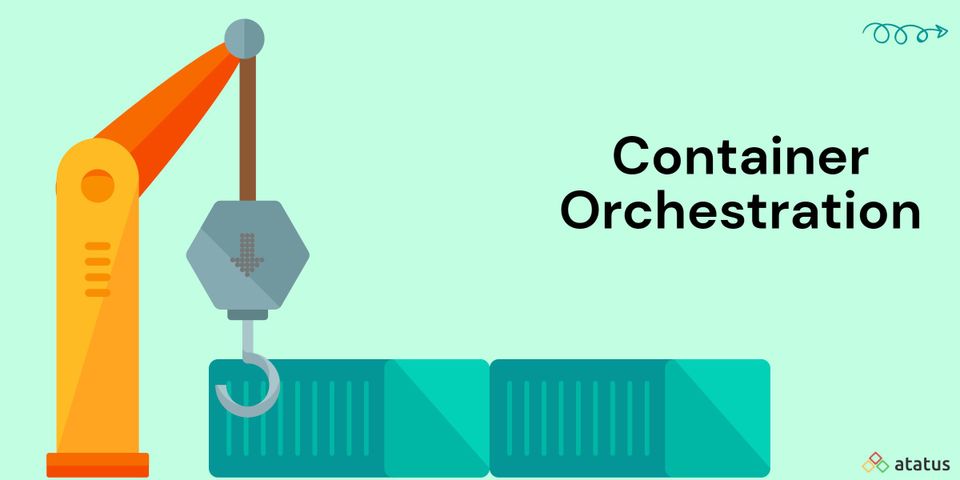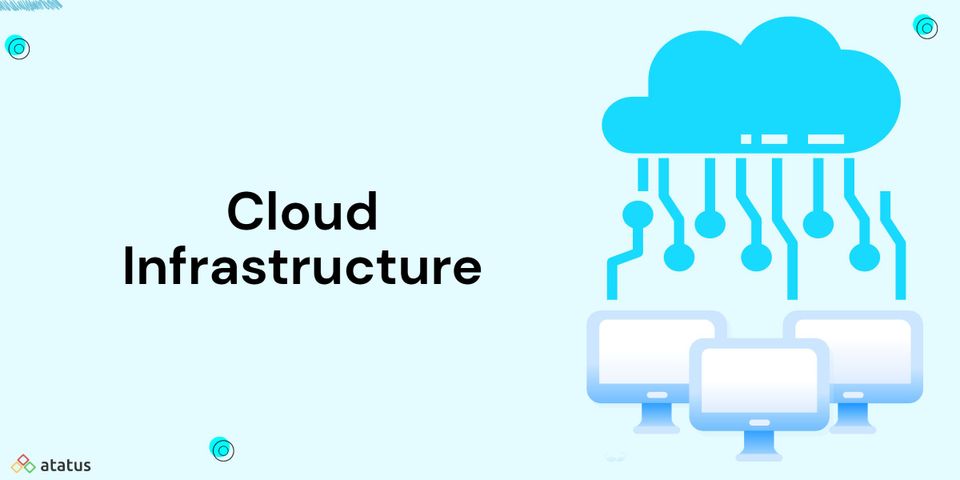The concept of a container-based application did not arise until the early to alter the IT world. For the first time, the software was consistently and reliably delivered, regardless of changes in the target environment. Container orchestration has become a hot issue in recent years, due to successful applications from companies like Facebook, Google, Netflix, among others.
We will cover the following:
- What is Container Orchestration?
- Why Container Orchestration is Important?
- Types of Container Orchestration Platforms
- How does Container Orchestration Work?
- Benefits of Container Orchestration
What is Container Orchestration?
The automated process of managing, scaling, and maintaining containerized applications is known as container orchestration. Containers are software executables that include application code, libraries, and dependencies so that they can be run anywhere. Container orchestration tools automate a number of activities that software teams face during the lifecycle of a container.
A standard container orchestration platform has the following features:
- Service Discovery
This is the idea of how microservices or applications communicate with one another over a network. It assists users in reducing the amount of configuration time required to set up the procedure. - Resource Allocation
Resource allocation can be done automatically in container orchestration platforms based on the application, container type, and micro-service. - Updates and Improvements
With no downtime, containers are upgraded and resources are updated automatically. - Health Checks
To guarantee that the orchestration is properly deploying and managing hyper-scale applications, the developers built up a health check for any service in the container.
Why Container Orchestration is Important?
Running containers in production can soon become a major effort due to their lightweight and transitory nature. When used in conjunction with microservices, which typically run in their own containers, a containerized application might result in hundreds or thousands of containers being used to develop and run any large-scale system.
If managed manually, this can add a lot of complexity. Container orchestration, which gives a declarative manner of automating most of the work, is what makes that operational complexity bearable for development and operations, or DevOps. This makes it a fantastic fit for DevOps teams and cultures, who aspire for far higher speed and agility than traditional software development teams.
Types of Container Orchestration Platforms
Because diverse environments necessitate varied amounts of orchestration, the market has spawned plenty of container orchestration tools in recent years, some of which are open source. While they all provide the same core container automation function, they work in different ways and were created for different user scenarios.
#1 Docker Swarm Orchestration
To the engineers of Docker, the orchestration was a feature that should be included as a standard. As a result, Swarm is bundled with Docker. The process of enabling Swarm mode and adding nodes is simple.
The benefit of Swarm is that it has a low learning curve, and developers can test their applications on their laptops in the same environment that they would use in production. Its downside is that it does not provide as many functionalities as Kubernetes, its sibling.
The primary architectural components of Docker Swarm are as follows:
- Swarm
A swarm is a collection of Docker servers that run in swarm mode, manage membership and delegation, and provide swarm services. - Node
A node is a docker engine instance that is part of a swarm. It can be either a worker or a management node. The management node assigns tasks to worker nodes, which are units of labour. It's also in charge of all orchestration and container management responsibilities, such as cluster state management and service scheduling. Tasks are received and executed by worker nodes. - Tasks and Services
A task contains a container as well as the commands that will run inside it. A job that has been assigned to a node cannot be moved to another node.
The task specification that needs to be executed on the nodes is called a service. It specifies which container images should be used, as well as which commands should be executed inside running containers.
#2 Kubernetes Orchestration
Swarm is still widely utilized in many situations, but Kubernetes container orchestration is the clear winner. Kubernetes, like Swarm, allows developers to construct resources like replica groups, networking, and storage, but in a different method.
For starters, Kubernetes is a standalone piece of software that requires you to either install a distribution locally or have access to an existing cluster in order to utilize it. Furthermore, the entire architecture of applications, as well as how they're built, differs significantly from Swarm.
The application is identical; it is only generated in a different manner. As you can see, Kubernetes is still used to develop the web application server, database, and payment gateway, although with a new structure. Furthermore, support structures such as networks and secrets must be established.
However, there are a number of benefits to the extra complexity. Kubernetes is a far more comprehensive container orchestration system than Swarm, and it can be used in both small and big environments.
The following are the primary Kubernetes architecture components:
- Nodes
In Kubernetes, a node is a worker machine. Depending on the cluster, it could be virtual or physical. The Master Node assigns duties to the nodes, which they complete. They also include the services required to run pods. A kubelet, a container runtime, and a Kube-proxy make up each node. - Master Node
This node is the master of all worker nodes and the source of all assigned tasks. The control pane, which is the orchestration layer that exposes the API and interfaces for defining, deploying, and managing container lifecycles, accomplishes this. - Cluster
The master node and many worker nodes are represented by a cluster. Containerized applications are deployed to clusters, which integrate these devices into a single entity. The workload is then divided across the nodes, with modifications made as nodes are added or deleted. - Pods
In Kubernetes, pods are the smallest deployable computing units that can be produced and controlled. Each Pod is made up of containers that have been bundled together and deployed to a node. - Deployments
For Pods and ReplicaSets, a deployment enables declarative updates. It allows users to specify how many replicas of a Pod they want to run at the same time.
How does Container Orchestration Work?
Container orchestration is fundamentally a three-step process or cycles when part of an iterative agile or DevOps pipeline, despite differences in techniques and capabilities across tools.
A declarative configuration model is supported by the majority of container orchestration tools. A developer creates a configuration file (in YAML or JSON, depending on the tool) that specifies the desired configuration state, and the orchestration tool executes the file and applies its own intelligence to achieve that state.
The configuration file usually describes which container images make up the application and where they are placed, provides storage and other resources to the containers, defines and protects network connections between containers, and specifies versioning (for phased or canary rollouts).
The orchestration tool chooses the appropriate host for the deployment of the containers and replicas of the containers for resiliency based on available CPU capacity, memory, and other requirements or limitations given in the configuration file.
The orchestration tool oversees the lifetime of the containerized application based on the container definition file once the containers have been deployed. This covers container scalability (both up and down), load balancing, and resource allocation. In the event of a system outage or a scarcity of system resources, it ensures availability and performance by moving containers to another host. It will collect and store log data and other telemetry in order to keep track of the application's health and performance.
Benefits of Container Orchestration
Container orchestration is essential for dealing with containers, and it enables businesses to reap all of their benefits. It also has its own share of benefits in a containerized environment, such as:
- Portability
One of the hugest benefits of containers is that they are designed to work in any environment. This enables moving containerized workloads between cloud platforms, regardless of the underlying operating system or other considerations, much easier. - Simplified Operations
The most important benefit of container orchestration and the primary reason for its adoption is this. Containers offer a lot of complexity, which can quickly spiral out of control if you don't use container orchestration to keep track of it. - Resource Utilization and Optimization
Containers utilize fewer resources since they are lightweight and ephemeral. For example, you can run several containers on a single system. - Resilience
Container orchestration tools can restart or scale a container or cluster automatically, increasing resilience. - Application Development
Containers can help accelerate application development and deployment, as well as changes and upgrades over time. When it comes to containerized microservices, this is especially true. This is a software architectural strategy that involves breaking down a larger solution into smaller components. - Added Security
Container orchestration's automated method reduces or eliminates the risk of human error, which helps make containerized applications secure.
Conclusion
Container orchestration is becoming increasingly popular. Software development teams are less hands-on, and container management is no longer a hassle. The number of containers to be deployed, as well as the application development speed and scaling needs, should all be taken into account. Container orchestration may be a helpful option for organizations trying to boost productivity and scalability with the right tools and resource management.
Monitor Your Entire Application with Atatus
Atatus provides a set of performance measurement tools to monitor and improve the performance of your frontend, backends, logs and infrastructure applications in real-time. Our platform can capture millions of performance data points from your applications, allowing you to quickly resolve issues and ensure digital customer experiences.

Atatus can be beneficial to your business, which provides a comprehensive view of your application, including how it works, where performance bottlenecks exist, which users are most impacted, and which errors break your code for your frontend, backend, and infrastructure.





